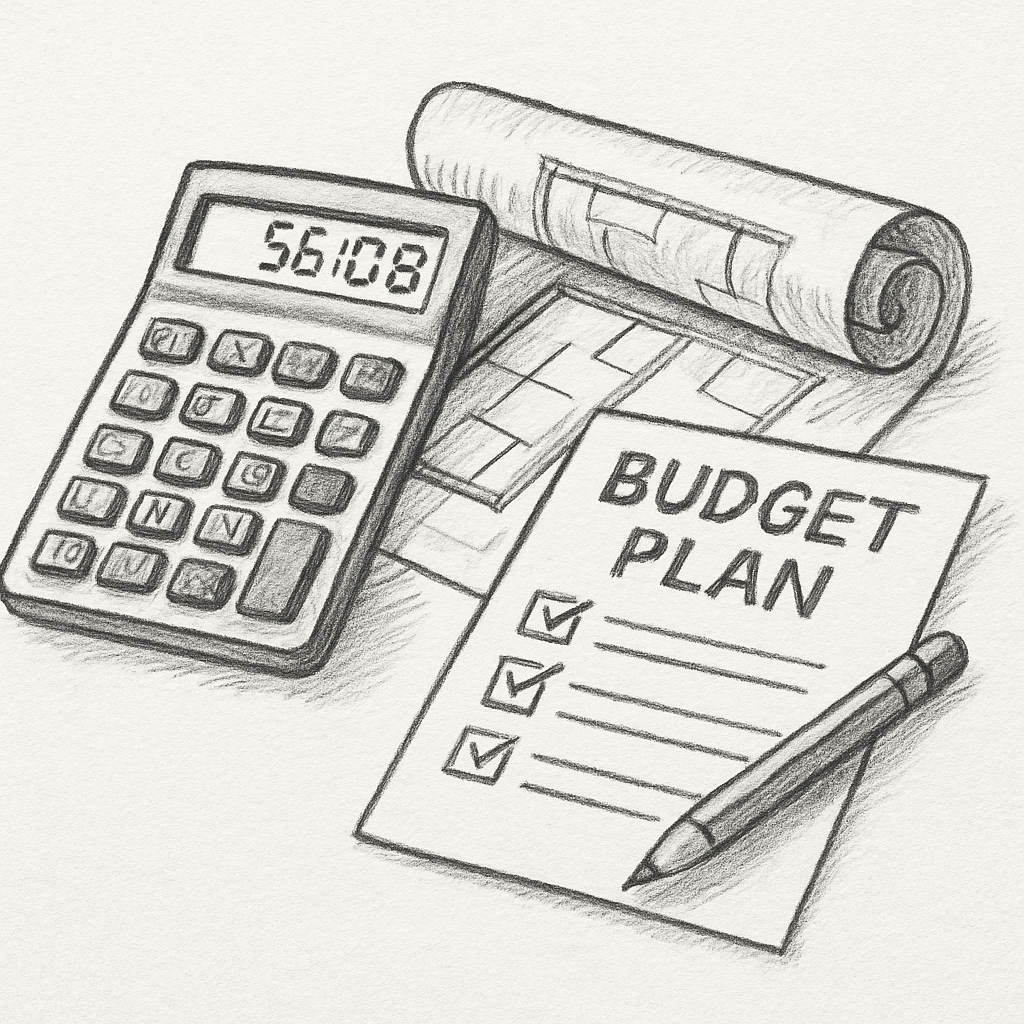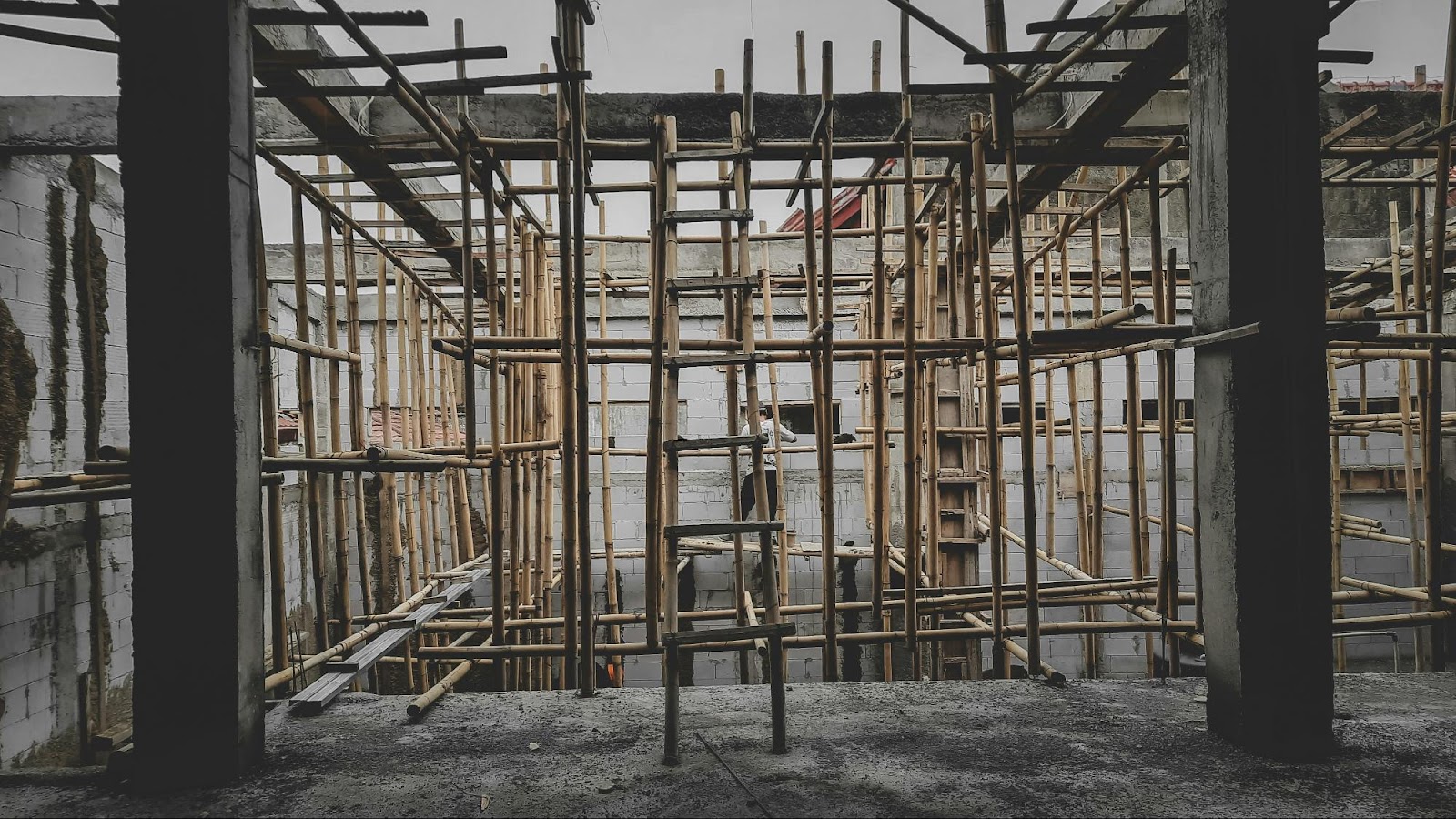Embarking on a custom home project is an exciting journey. It transforms your dream home from a mere idea into reality.
This guide will walk you through each step of the process. From initial planning to the final build, every detail matters.
Understanding the custom home design process is crucial. It ensures your home reflects your personal style and needs.
You’ll learn about architectural plans and engineering plans. These are the blueprints that guide your construction journey.
Site preparation and foundation construction are vital. They lay the groundwork for a stable and secure home.
Managing the construction timeline is key. It helps keep your project on track and within budget.
Choosing the right general contractor is essential. Their guidance can make or break your project.
Finally, we’ll explore innovative approaches in custom home building. These can enhance both functionality and aesthetics.
Understanding the Custom Home Project Journey
Embarking on a custom home project requires careful planning and understanding. Each step in the process plays a crucial role in bringing your vision to life. Familiarizing yourself with the journey ahead will prepare you for both challenges and triumphs.
The custom home building process involves several key stages. Your journey will typically include the following steps:
- Initial planning and budgeting.
- Designing and refining architectural plans.
- Securing necessary permits and approvals.
- Site preparation and foundation work.
- Framing and structural progress.
Successfully navigating these stages requires patience and attention to detail. Regular communication with your building team ensures that each phase aligns with your expectations.
This journey isn’t just about construction. It’s about creating a personalized space that meets your unique lifestyle needs. By understanding the process, you’ll be well-equipped to make informed decisions and enjoy a smooth building experience.
Step 1: New Home Planning and Project Budgeting
The first step in your custom home project is detailed planning. This includes both conceptualizing your dream home and setting a realistic budget. To start, determine your priorities and needs in your new home.
Identify the key features that are essential for your lifestyle. Consider the size, layout, and special amenities. This will guide your design process and ensure the home meets your expectations.
Budgeting is equally important and involves several layers. You’ll need to account for land costs, construction expenses, design fees, and permits. Don’t forget to include a contingency fund for unexpected costs.
Here’s a simple checklist for your planning:
- Define home features and layout.
- Set a realistic budget.
- Allocate funds for unforeseen costs.

Once you have outlined your plan and budget, consult with professionals. Architects and builders can provide insights to refine your ideas and cost estimates. This collaborative effort ensures that your dream home remains within reach.
Step 2: Custom Home Design, Architectural Plans, and Engineering Plans
Embarking on the custom home design phase is both exciting and crucial. This stage shapes the visual and functional aspects of your future home. It requires a collaboration between you and design professionals.
Begin with the creation of architectural plans. These plans serve as the blueprint for your home, detailing room layouts, dimensions, and spatial relationships. Work closely with your architect to ensure the design reflects your lifestyle and preferences.
After finalizing the architectural plans, move on to engineering plans. These include structural, mechanical, electrical, and plumbing systems. Each element is essential for the home’s safety and functionality.
To keep your plans on track, consider these steps:
- Collaborate with architects and engineers.
- Ensure structural integrity and compliance.
- Align designs with personal needs.

Throughout this process, clarity in communication is key. Regular meetings with your design team help refine ideas and address potential issues early. This collaborative approach ensures that your custom home design aligns with your vision and stands firm in structure.
Step 3: Securing Building Permits and Legal Requirements
Securing building permits is a vital phase in your custom home project. Every locale has its regulations, and adherence ensures a smooth build. Start by visiting your local building department.
Understand the specific legal requirements for your area. These often include zoning laws, environmental impact assessments, and safety standards. Complying with these regulations prevents delays and potential fines.
When applying for permits, prepare thoroughly. Typical documentation includes:
- Completed application forms.
- Detailed architectural and engineering plans.
- Proof of land ownership.
Communicating with local authorities helps clarify any uncertainties. Moreover, staying informed about updates to building codes can facilitate a streamlined permit acquisition process. This step, though bureaucratic, is crucial for a legal and hassle-free construction journey.
Step 4: Site Preparation and Land Development
Site preparation lays the groundwork for a successful home construction process. Begin by clearing the land of trees, rocks, and debris. This task ensures a clean slate for your construction crew.
Grading the land is crucial to manage water drainage. Proper grading prevents water-related damages that can affect your home’s stability. Consulting with a site engineer at this stage can be beneficial.
Consider utility installations early on. This includes planning for water, electricity, and sewage lines. Collaboration with utility companies can streamline this process.
Steps in site preparation include:
- Land clearing and grading.
- Excavation for foundations.
- Setting up utility access points.
Adequate site preparation sets the stage for all subsequent construction steps. It minimizes unforeseen challenges and supports a robust foundation.
Step 5: Foundation Construction – Building a Strong Base
Foundation construction is critical for any custom home project. A sturdy foundation supports the entire structure above, ensuring longevity and safety. Begin with laying out the foundation lines according to your engineering plans.
Concrete is the most common choice for foundations. It provides durability and stability, essential for weathering environmental conditions. Proper curing of concrete prevents cracks and uneven settling.
Foundation construction involves several stages. These steps include excavation, setting forms, and pouring concrete. Ensure the foundation aligns perfectly with the architectural blueprint to avoid issues during framing.
Important steps in foundation construction:
- Excavation according to site plans.
- Installation of formwork to shape the foundation.
- Pouring and curing of concrete.
A robust foundation creates a reliable base for all subsequent building phases, reducing future maintenance needs.

Step 6: The Framing Process and Structural Work
The framing process shapes your home. It forms the skeleton, outlining both walls and roof. This stage sets the stage for later construction steps.
Wood is the most common material for framing. It’s versatile and easy to work with. Steel can be used for added strength. Framing must comply with safety standards to ensure durability.
Precision is key during the framing process. Each piece must align perfectly. Errors can lead to misalignment in walls and ceilings, affecting the overall design.
Key aspects of the framing process:
- Assembling walls and installing roof trusses.
- Ensuring structural elements align with plans.
- Installing flooring and ceiling systems.
The integrity of your custom home project depends heavily on this step. Quality framing ensures a sturdy and secure structure.

Step 7: Installing MEP Systems (Mechanical, Electrical, Plumbing)
Installing the MEP systems is crucial for your custom home project. These systems bring life and functionality to the structure. Mechanical systems manage heating, ventilation, and air conditioning.
Electrical systems deliver power throughout the home. Careful planning ensures outlets and lighting fixtures are in the right spots. Safety is a top priority, following all codes and standards.
Plumbing systems provide water supply and waste management. Pipes must be installed correctly to prevent leaks and ensure water pressure. Professional installation is critical for reliable performance.
Key considerations for MEP systems:
- Coordinate installation with the construction timeline.
- Ensure compliance with local building codes.
- Integrate energy-efficient options for sustainability.
Proper MEP system installation enhances your home’s comfort and efficiency. It’s an investment in quality living.
Step 8: Home Exterior Finishes and Weatherproofing
Choosing the right exterior finishes is both an aesthetic and functional decision. These finishes determine the home’s curb appeal and durability against the elements. Materials such as brick, siding, or stone each have distinct benefits.
Weatherproofing is essential to protect your home from harsh weather conditions. It keeps moisture out and ensures the home remains energy efficient. Consider adding features like gutters and drainage systems for enhanced protection.
Key elements of exterior finishes and weatherproofing:
- Select materials that suit your climate.
- Ensure proper installation to prevent water intrusion.
- Consider maintenance needs for long-term durability.
Investing in quality finishes and weatherproofing safeguards your home investment for years to come.

Step 9: Interior Design Planning and Finishes
Interior design is where your home’s personality truly shines. It’s the stage where your vision comes to life within the walls of your custom home project. From selecting paint colors to choosing flooring, each decision shapes your living environment.
Designing a cohesive interior involves aligning your selections with both form and function. Consider the way you live and move through spaces. Prioritize comfort and aesthetics in equal measure. Whether you prefer modern, traditional, or eclectic, your home should reflect your style.
Here are some key considerations:
- Choose durable materials that suit your lifestyle.
- Balance colors and textures to create depth and interest.
- Think about furniture placement for optimal space use.
It’s beneficial to work with an interior designer to refine your vision. Their expertise can guide you in selecting finishes that harmonize your style with the home’s architecture.

Step 10: Construction Timeline Management and Quality Control
Managing the construction timeline is vital to staying on track. Delays can lead to increased costs and frustration. A well-planned timeline keeps the project moving smoothly from start to finish. Regular check-ins with your contractor ensure milestones are met on time.
Quality control is just as crucial throughout the home construction process. It ensures every detail meets your standards. Consistent inspections help catch potential issues early and maintain craftsmanship.
Consider these steps for effective management:
- Establish clear deadlines and expectations.
- Schedule frequent progress meetings with your contractor.
- Implement regular site inspections to maintain quality.
Attention to both timeline and quality ensures a successful custom home project.
Step 11: General Contractor Guidance and Communication
Choosing the right general contractor is critical to your custom home project. They oversee the construction steps and coordinate the teams involved. Ensure your contractor has experience and a good track record.
Effective communication with your contractor is crucial. It keeps the project aligned with your vision and timeline. Establish clear channels for regular updates and discussions.
To enhance communication, consider the following:
- Set up weekly project meetings.
- Use a communication app for quick updates.
- Define clear points of contact for specific issues.
Step 12: Final Inspections, Walkthrough, and Move-In
As your custom home project nears completion, it’s time for final inspections. These ensure everything meets safety and quality standards. Inspections cover all aspects from MEP systems to structural integrity.
After inspections, conduct a thorough walkthrough with your contractor. It’s your chance to spot any remaining issues before moving in. Confirm that all plans and modifications have been executed to your satisfaction.
Steps to consider for a successful move-in include:
- Verify that utilities are operational.
- Assess interior finishes for any imperfections.
- Ensure the exterior is fully weatherproofed.
Innovative Approaches: Sumer Innovations and Modern Custom Home Building
Sumer Innovations is pioneering in custom home building with fresh techniques. Their focus on technology enhances design precision and efficiency. They bring smart solutions, helping reduce costs and improve build quality.
Modern custom building leverages digital tools for visualization and planning. This approach ensures design accuracy and client satisfaction. Innovations in materials and processes make homes more sustainable and energy-efficient.
Key modern home building innovations include:
- Digital design tools
- Energy-efficient materials
- Sustainable building practices

Tips for Success and Common Mistakes to Avoid
Embarking on a custom home project requires careful attention. Success often hinges on thorough planning and clear communication. Stay involved throughout the construction process, and frequently visit the site.
Avoid common pitfalls by dedicating time to proper budgeting and timeline management. It’s essential to be realistic about expectations and adaptable to changes.
Key tips for success:
- Maintain open communication with contractors
- Regularly review project progress
- Be prepared for unexpected challenges
Remember, flexibility can save time and money in the long run.
Conclusion: Your Custom Home Project from Blueprint to Build
Building a custom home is a journey of creativity and planning. Each step, from blueprint to build, unfolds your vision into reality. It demands dedication and attention to detail.
As you move forward, remember that patience and open communication are your allies. Embrace innovative solutions and learn from every challenge. With careful guidance, your dream home will come to life, tailored to your unique needs and style. Your custom home project will be a testament to your vision and perseverance.




